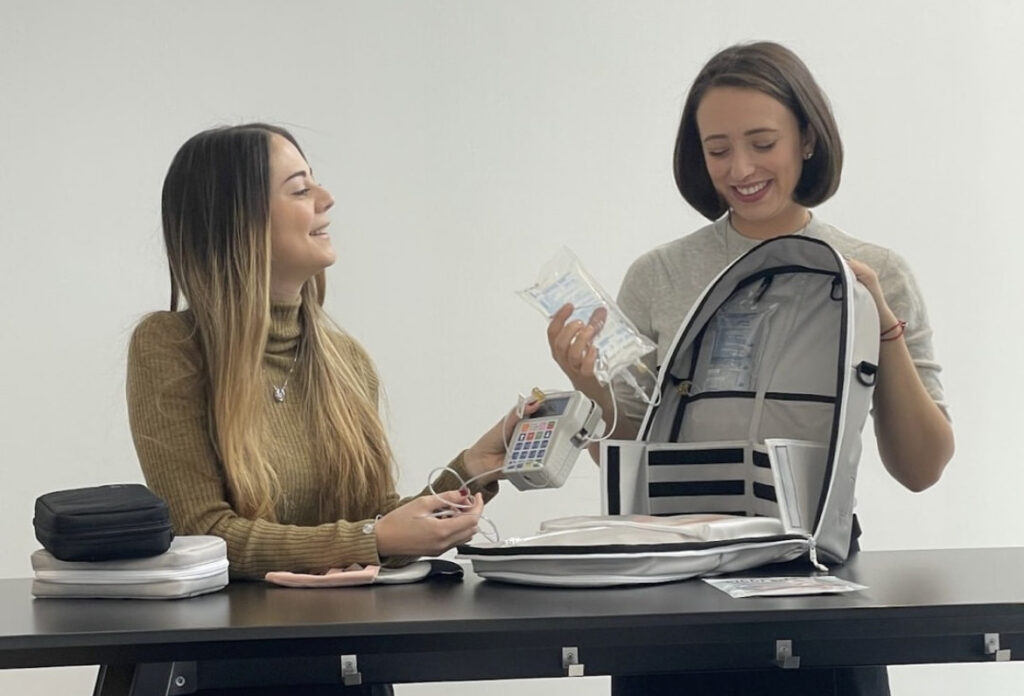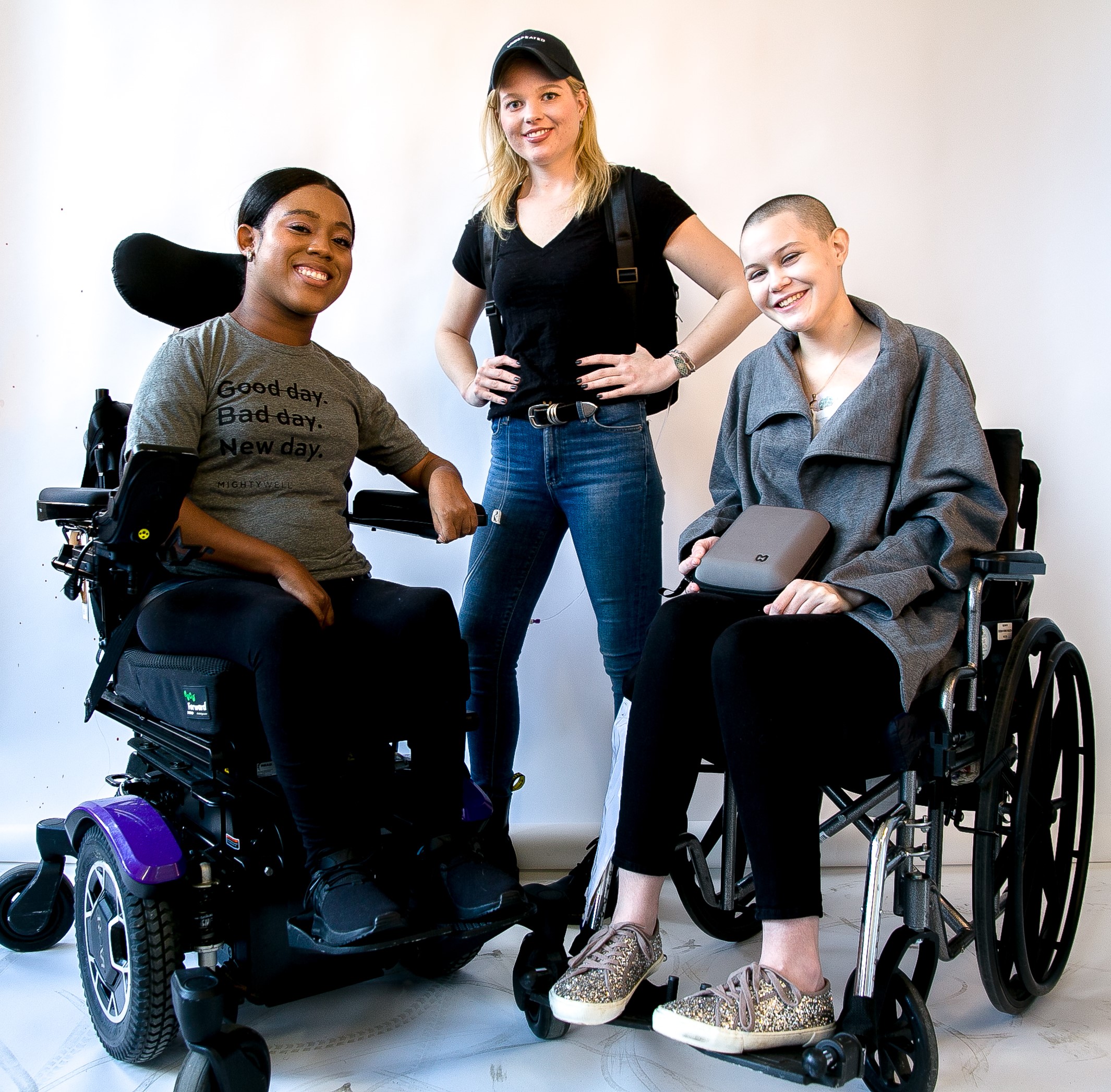Diversity inclusion in the workplace can have benefits for all involved. Not only does it make our society more equitable, but having diverse perspectives – and listening to those voices – is good for business. We all bring different experiences and strengths and are mightier together™.
Wanting to be more inclusive is wonderful, but hiring more diversity without shifting the culture and setup of your workplace can actually be harmful, as the new employees may find themselves in situations that do not meet their needs. If creating an inclusive work environment feels overwhelming, that’s ok! Change is hard, especially when unsure of the best way to go about it.
As a company led by patients with disabilities, we know what it’s like to find the right work environment. We’ve written about searching for jobs that fit your needs and advocating when needs aren’t met. But the heavy lifting doesn’t need to be all on employees! If you are an employer wanting to make your own business more inclusive for folks with chronic illness and disabilities, here are some tips to get you started:
1. Job sites focused on disability inclusion in the workplace.
Inclusion of employees with disabilities may seem trickier than the inclusion of folks of diverse races or genders. Some employers worry that this may mean disabled workers won’t be able to do a good job. It’s true that, by definition, our disabilities may make aspects of a traditional job difficult, but that does not mean we are any less capable or valuable than abled employees. We all have strengths and weaknesses. Someone unable to access a second-floor office may be an outstanding leader. Someone with a compromised immune system who needs to work from home at times may be incredibly efficient. Someone with hearing impairments may be uniquely creative. The label “disabled” does not actually tell you anything about an employee’s potential. In fact, the only thing it does tell you is that this individual has had to find their way in a world that is often not accommodating; this need for frequent workarounds creates tremendous resilience, problem-solving, and communication skills – all extremely valuable in a workplace.
This understanding that people with illness and disabilities are uniquely capable workers was the foundation for Chronically Capable, an organization that helps connect sick and/or disabled job seekers with inclusive employers. It was founded by Hannah Olson, a disabled Lyme-warrior who knew her potential was much more than what she could bring to an unaccommodating workplace. It works like other job listing sites, but more than just searching for skill sets, resumes, and job descriptions, Chronically Capable asks its users about specific accommodations – can you offer flexible hours? Remote work? Visual aids? Even better, Chronically Capable provides education and resources for employers, so not only can you attract jobseekers by displaying which accommodations you are able to provide now, but they can make your journey to becoming more inclusive much easier.

2. Explore accommodations for disability inclusion in the workplace
Ok, so you want to be more inclusive and are willing to learn what that might mean for your company. Still, the legal side of providing the necessary accommodations for folks with disabilities have you feeling nervous. That’s ok – if the ADA (Americans with Disabilities Act) is not familiar, this resource can help you navigate its nuances. Nervous about holding conversations with your employees about what “reasonable accommodations” might look like? Here is a guide to help you think things through before a meeting with a disabled employee. And finally, here is a list of potential accommodations that can help you think outside the box!
3. Small steps can make a big difference for disability inclusion in the workplace
If you have not lived with chronic illness or disabilities, you may feel overwhelmed when considering how to accommodate the vast array of disabilities employees face. The good news is that there are many small steps you can take that make a massive difference. Not only that, but most of these tweaks can benefit all employees – not just those with relevant disabilities! For example, written agendas sent before meetings may help people with brain fog or hearing impairments; they are also good for introverts. Here are a few examples:
- Live captions on zoom calls and videos
- Spaces with different lighting/noise-level options and scent-free spaces
- Seating (and standing) options
- A refrigerator can help with tricky food needs, medications, or breastfeeding moms
- Accessible presentations
- Remote work options
4. Disability inclusion in the workplace
The Covid-19 pandemic has held a magnifying glass to the gears that keep our society running. While it has come with significant pitfalls, many people with illness and disabilities have actually found their needs are better met since 2020. Remote work allows us to be in our own space with all the supplies and accessibility we need. It also tends to allow for a more flexible schedule, so anyone who benefits from naps, daytime IV infusions, or frequent meals no longer has to make these needs visible. We can work lying down or in comfortable clothes.
We know these changes are possible. Now is the time to make these options available even when not in lockdown. Yes, working in person can benefit collaboration, morale, informal check-ins, etc. But having the option for remote work when it’s not necessary opens the doors to many who would otherwise be unable to meet their potential. For folks with conditions that come and go, being able to work remotely during a flare could mean the difference between continuing to work vs. having to take a leave of absence. Note that, like all accommodations, it is likely that abled employees will benefit as well. Parents may appreciate being able to work from home when their kids are sick. People with long commutes may get more done if they do not have to waste an hour to navigate transit.
Not only are our workplaces in a state of flux from the pandemic, but we also have a worker shortage. Advertising that you value disability inclusion in the workplace – and using this fluctuating time to shift your environment to be inclusive – can give you an edge in attracting the talent you want.

